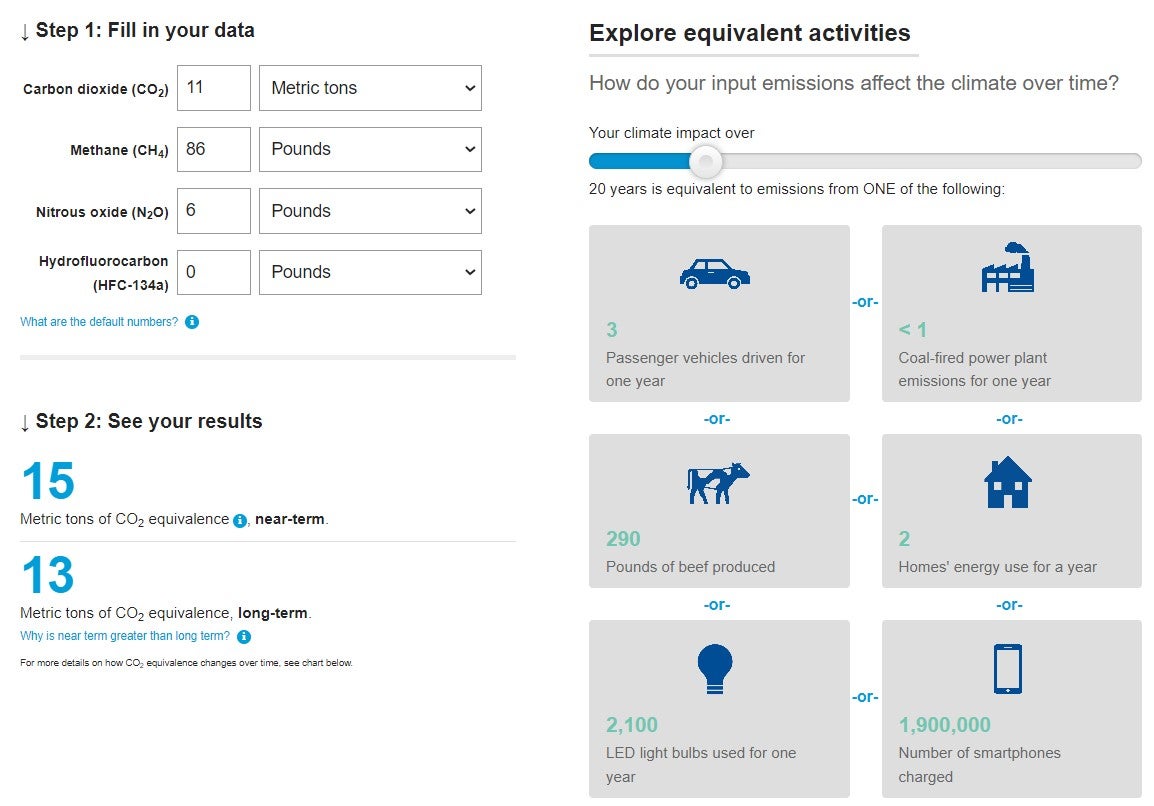 It’s been a brutal summer here in Texas. Parts of the state suffered through weeks of temperatures topping 100 degrees, and rarely dipping below 80 at night. It’s a strain on our power grid, agriculture and – most of all – people.
It’s been a brutal summer here in Texas. Parts of the state suffered through weeks of temperatures topping 100 degrees, and rarely dipping below 80 at night. It’s a strain on our power grid, agriculture and – most of all – people.
It’s not just Texas of course. Excessive heat and severe flooding has claimed thousands of lives across Europe, Asia, and Africa. The increasingly destructive heat, fires, hurricanes and droughts are all connected to climate pollution, including methane emissions.
But how much warming, exactly, is methane contributing? It is tricky to quantify because this potent gas has a short lifetime. The EPA has a good tool to calculate the climate impact of various greenhouse gases, including methane, but it only shows the impact over a long-term timeframe — 100 years — and that can downplay methane’s near-term warming power.
The Biden administration’s move to reinstate and strengthen methane emission rules, coupled with the Global Methane Pledge from COP26, put methane in the spotlight. But many remain unaware of its potency, and the potential benefits we could achieve by cutting methane emissions. If we don’t recognize the extent of the methane problem, we could miss a crucial opportunity to avert the worst heat waves and other climate disasters in the future.
That’s why EDF has developed a new calculator that converts abstract greenhouse gas emission numbers into equivalent activities from our daily lives to make the data more meaningful.
Translating methane leaks into everyday activities
Our calculator shows how different species of greenhouse gases warm the planet, because those individual impacts could vary dramatically over time. While we know that all greenhouse gases behave differently, scientists have historically measured them with the same rubric —comparing them to long-lived carbon dioxide over a 100-year timeframe. This metric — while simple to apply — obscures the much more powerful, but shorter-lasting, effects of some other greenhouse gases like methane.
Our new tool translates emissions into everyday activities, like driving cars, consuming beef, or charging smart phones. It also allows users to see the impacts of these emissions from the year they are released to 100 years in the future.
Our calculator shows how short-lived greenhouse gases like methane generate a lot of warming in the near-term, but their impact relative to carbon dioxide decreases as the decades wear on. This provides a fuller picture that reflects the nuances of short-lived gases. It also means that cutting emissions of short-lived gases can quickly slow down warming. Research shows that cutting methane from oil and gas operations, agriculture and other sources as much and as fast as possible could slow the rate of warming by a whopping 30% in the next two decades.
Taking action can have immediate impacts
Understanding the critical differences between short and long-lived gases can help us develop policies that will have profound impacts – both in the long-run and more immediately. This insight has led the U.S., Europe and countries around the world to focus on methane emissions
We have a variety of solutions at the ready. Limiting methane leakage from oil and gas development, for example, will both minimize pollution and save product. It’s affordable and immediately impactful.
According to the Intergovernmental Panel on Climate Change (IPCC), anywhere from 50 to 80% of methane emissions from oil and gas could be eliminated at a relatively low cost with technologies and practices that already exist.
We’re already experiencing dramatic impacts from warming in the form of stronger storms, more intense heat waves, and larger, more destructive wildfires. If we really want to see improvement, both today and for future generations, we need to act now on gases like methane.











 The Intergovernmental Panel on Climate Change has published yet another alarming report about the dangers we face from the climate crisis.
The Intergovernmental Panel on Climate Change has published yet another alarming report about the dangers we face from the climate crisis.